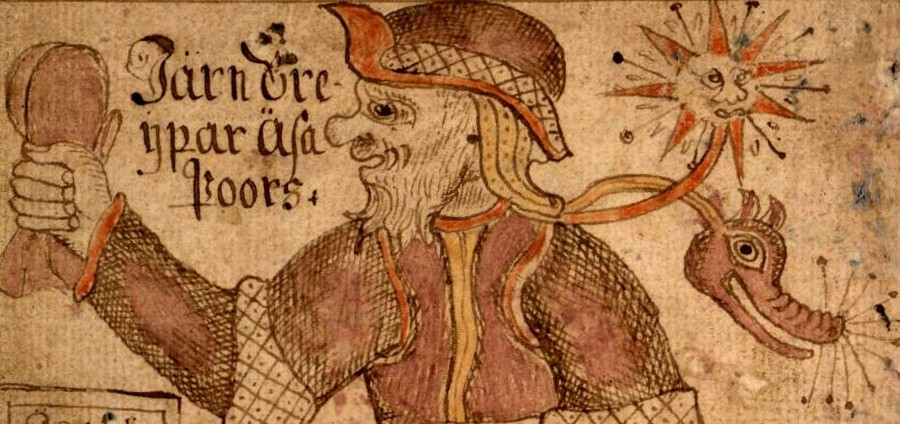Roughly translated: I’m writing poetry in Old Norse.
At least I won’t take my work home with me that easily (image from Wikipedia)
It’s something I personally love, I should add. I’m writing the background story for the conflict in a Viking combat game, and I’m currently working on the lyrics for a song.
By the way, by Old Norse I mean: Old-Icelandic. There are many historical sources written in that particular dialect. Although there are bits of other dialects here and there, Old-Icelandic, also known as Old West Norse, is the language that we’re able to reconstruct and interpret with a high degree of certainty.
Creative + Intellectual
It’s a fascinating intellectual and creative challenge, and I’m kind of oscillating between two modes. First, I need to figure out what I want the lyrics to say, so there’s the creative bit. I need to compose stanzas and divide them into lines. Then, I need to translate the English text to Old Norse. I translate each word literally first, not taking into account the conjugation of verbs or the declension of nouns. I need to revert back to creative mode now, because I need to adjust the line to the rules of Old Norse poetry, but more on that later. Finally, I need to put on my academic cap again, to ensure that each word is made grammatically sound: conjugated verbs, nouns in the proper cases, adjectives in agreement, and so on. After a few hours or so, I have produced a line, feeling like a Skald: a Norse poet/bard. (Hopefully, my speed will increase as I become more proficient in the language!)

Bragi Boddason, a Skald who served under Swedish kings, including Ragnar Lothbrok (image by Carl Wahlbom)
Old Norse poetry rules
The title betrays I’m writing fornyrðislag, which is a type of poetry with its own rules. It’s actually one of the less complicated forms, because I’m not completely insane and actually would like this project to end some day. The name can be translated as ‘way of ancient words’, which is pretty awesome in itself. Other forms include ljóðaháttr (‘ballad metre’) and dróttkvætt (‘lordly verse’), which have equally inspiring names, yet also more elaborate restrictions than the form I use.
Fornyrðislag consists of verses of 2-8 lines. Each half line has two heavily stressed syllables, and two or three unstressed syllables. At least two of these stressed syllables, called ‘lifts’, alliterate, meaning they start with the same letter. One of the alliterating lifts needs to be the main stave, which is the first lift of the second half line.
Confused? Here’s an example:
Hann býdr Sútbarni leik, lúka LÍF ok ófrið
He challenges Sútbarn to a contest, ending a life and a war
The alliterations are underlined, the lifts are in bold and the main stave is in capital letters.
It’s all work in progress, mind you, so please excuse any errors and faults still present.
Disclaimer
Of course, I am aware that my poetic enterprise is nothing but an approximation, both in the linguistic and in the poetic sense. I’m not that vain to think I can imitate the great poets of a past age. However, I do have a sincere respect for the culture in addition to a genuine academic interest in mastering the language. And it’s amazing that I can pour the background story that I wrote in a literary form that matches the themes and tone of the story.
It’s been a lot of fun and a truly inspiring experience. I reckon it will be even more incredible when we actually start recording the song: someone will have to sing these words!



I spent a great deal of time to find something similar to this
Thanks, it’s very informative